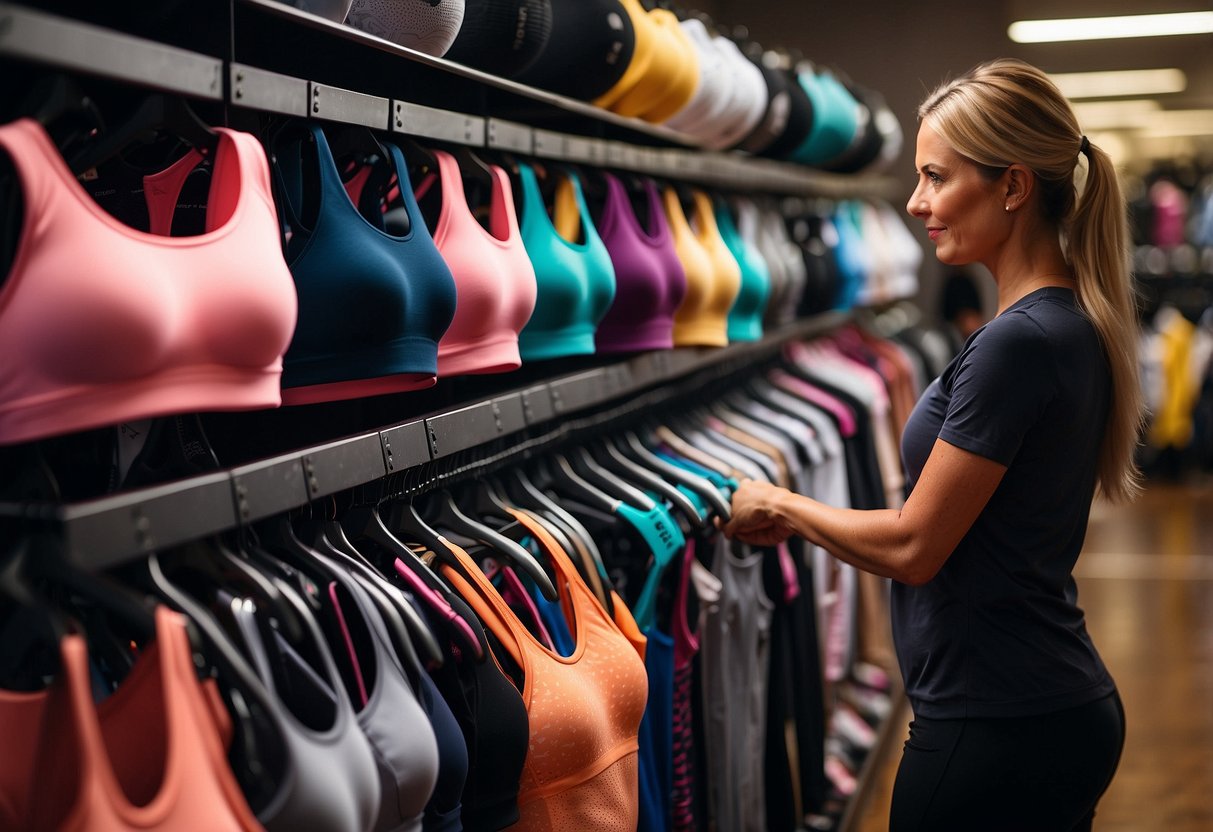
Straps and Band Features
Straps and the band are fundamental in maintaining the bra’s fit and support. Adjustable straps allow for a customized fit, accommodating various body shapes and sizes. Wide straps can distribute weight more evenly, reducing pressure on the shoulders.
Racerback straps offer added support by keeping the straps in place during vigorous activities. The band, often the primary source of support, should be snug but comfortable. A wider band distributes pressure and enhances stability. Materials that wick moisture and have enough elasticity can prevent chafing and ensure a secure fit.urses.
Understanding these features ensures a better-informed choice, tailored to individual fitness needs.
Support and Functionality Needs
Choosing the right sports bra involves understanding the support level and unique needs based on breast size and shape. These factors ensure comfort and minimize breast movement during exercise, reducing the risk of discomfort or pain.
Determining Support Level
The support level required varies with the intensity of the workout. High-impact activities like running or aerobics necessitate more support to reduce breast movement. For low-impact exercises such as yoga or pilates, lighter support might suffice. The goal is to prevent excessive movement to protect breast tissue and alleviate breast pain.
Different bras provide varying support levels, like compression bras pressing the breasts against the chest or encapsulation bras with individual cups offering extra lift and shape. Combination bras incorporate both methods, providing maximum support, essential for intense activities.
Special Considerations for Breast Size and Shape
Breast size and shape significantly influence the type of sports bra needed. Larger breasts often need bras with strong straps, wide bands, and ample coverage to manage movement and reduce strain from gravity. Smaller breasts might find enough support in bras with less rigid structures but should still ensure adequate compression and coverage.
Some individuals may experience varying breast shapes, requiring bras that adapt well to their unique contours. Adjustable straps, removable padding, and reinforced bands can offer personalized fit and comfort, tailored to the breast’s natural shape. These features maintain support and function, ensuring minimized breast pain and optimal performance during workouts.
Assuring Comfort and Reducing Pain
Choosing the right sports bra is crucial to ensure comfort and reduce any potential pain. This involves being aware of common discomforts as well as methods to prevent chafing and irritation.
Addressing Common Discomforts
Common discomforts with sports bras can stem from factors such as poor fit or improper support. Sports bras should fit snugly but not too tight. They should provide firm support without compressing the chest excessively.
If a sports bra digs into the shoulders or underbust, it can lead to discomfort and pain. Wide, padded straps can distribute weight more evenly, preventing digging in. The band should sit flat against the body without riding up, which indicates it is too loose. Adjustable straps and bands allow for a more customized fit, reducing the likelihood of discomfort during workouts.
Racerback designs often offer better support for high-impact activities, minimizing bounce control. Additionally, cups should encapsulate each breast individually rather than pressing them together, which can reduce pressure points and increase comfort.
Preventing Chafing and Irritation
Chafing and irritation are common issues during workouts, particularly around the seams and edges of a sports bra. Look for bras with flatlock seams, which lie flat against the skin and reduce friction. Seamless designs can also significantly minimize irritation.
Moisture-wicking fabrics help keep the skin dry and reduce the chance of chafing. Synthetic materials like polyester and spandex are often more effective at moisture management than cotton. Bras with mesh panels can provide additional breathability, keeping the skin cool and less prone to irritation.
Proper fit also plays a significant role in preventing chafing. A well-fitted bra should not move excessively against the skin. If there is rubbing or friction, adjusting the fit or opting for a different size or style may be necessary. Regularly replacing sports bras once they lose elasticity can also help maintain comfort and reduce irritation.



